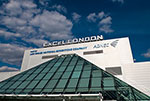What is Parenteral Nutrition?
When you are in good health, it is easy to take eating for granted. It’s a normal everyday function that not only sustains the body but can bring considerable pleasure too.
But what happens when illness and surgery has deprived us of our ability to absorb nutrients from food in the normal way?


What is parenteral nutrition and what does it do?
Patients who have had major surgery due to bowel or stomach cancer, or those with severe Crohn’s disease for example, often instead have to resort to parenteral nutrition – or artificial feeding.
This is a method of getting nutrition into the body through the veins, rather than the oral route.
It delivers nutrients such as sugar, carbohydrates, proteins, lipids, electrolytes and trace elements to the body.
It is also used to assist patients with ischaemic bowel disease, where there is reduced blood flow to the bowels, damaging the body’s capacity to absorb vital nutrients.
Parenteral nutrition is administered by a needle or catheter usually connected to a large vein that goes to the heart.
Attached to the catheter is a bag containing liquid feed, usually about three litres, which supplies each patient’s particular nutritional needs.
Bags need to be refrigerated or frozen but have to be allowed enough time to reach room temperature before use.
Feeding usually takes 10 to 12 hours a day, five to seven times a week.
CME Medical plays a central role in providing for the needs of patients who depend on artificial feeding. We supply pumps that control the delivery of liquid nutrients at the required rate.
Self-feeding at home is on the increase partly because of better survival rates from diseases that were once fatal, meaning more patients need nutritional support.
There are better treatments these days so more patients are being discharged. More patients are being discharged with complex medical conditions than ten years ago.
But parenteral nutrition is not without its fair share of risks.
Patients can develop mouth sores, poor night vision and skin changes, as well as less common adverse effects such as confusion, convulsions, difficulty breathing, increased urination, swelling of the hands, feet, or legs, thirst and vomiting.
But the biggest problem remains the risk of infection.
Even though patients are taught how to carry out the procedure so that it is aseptic (free of germs), the constant connecting and disconnecting of feeding tubes makes it extremely difficult to prevent bacterial infection.
Rates of infection vary considerably, from less than 2 per cent according to some studies, to more than 25 per cent according to others.
Thankfully, infection control is getting better. Home health care companies these days are working harder and harder to reduce infection rates. Many of them have invested heavily, the time and energy to ensure their nurse teams have the skills to achieve this.
Articles Related to Patient Impact:
March 15, 2022
Nine days nutrition lost out of fourteenDecember 3, 2019
The NGPOD® User Community: What are they saying?November 4, 2015
Gut Bacteria – The Brain and BodyWHAT IS NGPOD?
NGPod: Stop "Never Events", improve patient recovery and reduce costs
The NGPod handheld devices overcomes many of the risks associated with existing Nasogastric placement confirmation methods.
- No aspiration required
- No interpretation required. Get a clear "Yes/No" answer
- Rapid result [c.15 seconds]
- Reduce delays to patients treatment, hydration and nutrition
- More cost-effective than testing with pH strips






.jpg)


%20(1).jpg)











